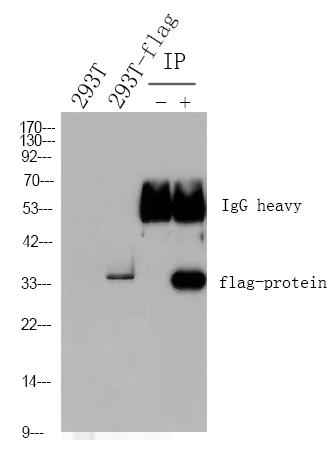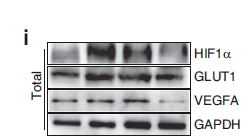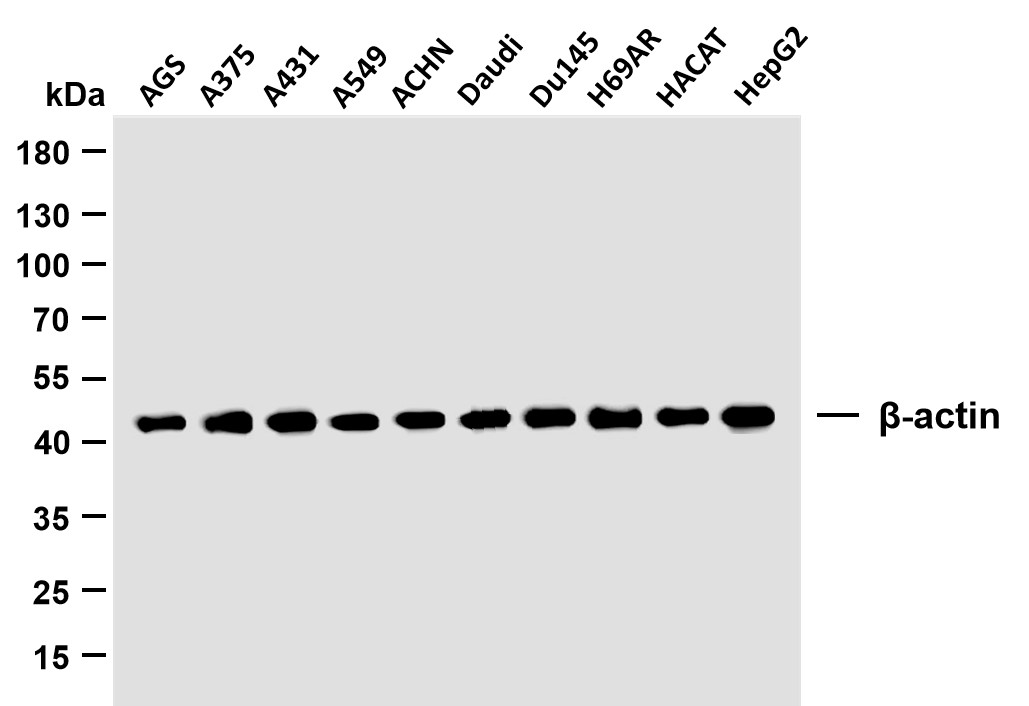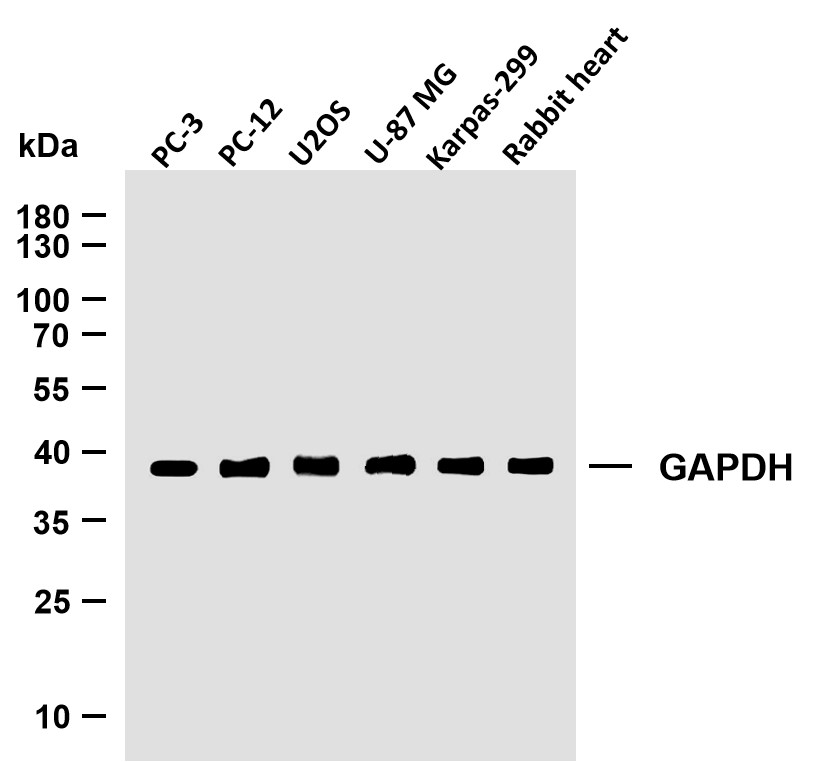
Catalog: YN1509
Size
Price
Status
Qty.
200μL
$450.00
In stock
0
100μL
$280.00
In stock
0
40μL
$150.00
In stock
0
Add to cart


Collected


Collect
Main Information
Target
VATC1
Host Species
Rabbit
Reactivity
Human, Rat, Mouse
Applications
WB, ELISA
MW
42kD (Observed)
Conjugate/Modification
Unmodified
Detailed Information
Recommended Dilution Ratio
WB 1:500-2000; ELISA 1:5000-20000
Formulation
Liquid in PBS containing 50% glycerol, and 0.02% sodium azide.
Specificity
VATC1 Polyclonal Antibody detects endogenous levels of protein.
Purification
The antibody was affinity-purified from rabbit antiserum by affinity-chromatography using epitope-specific immunogen.
Storage
-15°C to -25°C/1 year(Do not lower than -25°C)
Concentration
1 mg/ml
MW(Observed)
42kD
Modification
Unmodified
Clonality
Polyclonal
Isotype
IgG
Related Products
Antigen&Target Information
Immunogen:
Synthesized peptide derived from part region of human protein
show all
Specificity:
VATC1 Polyclonal Antibody detects endogenous levels of protein.
show all
Gene Name:
ATP6V1C1 ATP6C ATP6D VATC
show all
Protein Name:
V-type proton ATPase subunit C 1 (V-ATPase subunit C 1) (Vacuolar proton pump subunit C 1)
show all
Background:
This gene encodes a component of vacuolar ATPase (V-ATPase), a multisubunit enzyme that mediates acidification of intracellular compartments of eukaryotic cells. V-ATPase dependent acidification is necessary for such intracellular processes as protein sorting, zymogen activation, receptor-mediated endocytosis, and synaptic vesicle proton gradient generation. V-ATPase is composed of a cytosolic V1 domain and a transmembrane V0 domain. The V1 domain consists of three A and three B subunits, two G subunits plus the C, D, E, F, and H subunits. The V1 domain contains the ATP catalytic site. The V0 domain consists of five different subunits: a, c, c', c'', and d. Additional isoforms of many of the V1 and V0 subunit proteins are encoded by multiple genes or alternatively spliced transcript variants. This gene is one of two genes that encode the V1 domain C subunit proteins an
show all
Function:
Function:Subunit of the peripheral V1 complex of vacuolar ATPase. Subunit C is necessary for the assembly of the catalytic sector of the enzyme and is likely to have a specific function in its catalytic activity. V-ATPase is responsible for acidifying a variety of intracellular compartments in eukaryotic cells.,similarity:Belongs to the V-ATPase C subunit family.,subunit:V-ATPase is an heteromultimeric enzyme composed of a peripheral catalytic V1 complex (components A to H) attached to an integral membrane V0 proton pore complex (components: a, c, c', c'' and d).,tissue specificity:Ubiquitous.,
show all
Cellular Localization:
Cytoplasmic vesicle, secretory vesicle, synaptic vesicle membrane ; Peripheral membrane protein . Cytoplasmic vesicle, clathrin-coated vesicle membrane ; Peripheral membrane protein .
show all
Tissue Expression:
Ubiquitous.
show all
Research Areas:
>>Oxidative phosphorylation ;
>>Metabolic pathways ;
>>Phagosome ;
>>mTOR signaling pathway ;
>>Synaptic vesicle cycle ;
>>Collecting duct acid secretion ;
>>Vibrio cholerae infection ;
>>Epithelial cell signaling in Helicobacter pylori infection ;
>>Human papillomavirus infection ;
>>Rheumatoid arthritis
>>Metabolic pathways ;
>>Phagosome ;
>>mTOR signaling pathway ;
>>Synaptic vesicle cycle ;
>>Collecting duct acid secretion ;
>>Vibrio cholerae infection ;
>>Epithelial cell signaling in Helicobacter pylori infection ;
>>Human papillomavirus infection ;
>>Rheumatoid arthritis
show all
Signaling Pathway
Reference Citation({{totalcount}})
Catalog: YN1509
Size
Price
Status
Qty.
200μL
$450.00
In stock
0
100μL
$280.00
In stock
0
40μL
$150.00
In stock
0
Add to cart


Collected


Collect
Recently Viewed Products
Clear allPRODUCTS
CUSTOMIZED
ABOUT US
Toggle night Mode
{{pinfoXq.title || ''}}
Catalog: {{pinfoXq.catalog || ''}}
Filter:
All
{{item.name}}
{{pinfo.title}}
-{{pinfo.catalog}}
Main Information
Target
{{pinfo.target}}
Reactivity
{{pinfo.react}}
Applications
{{pinfo.applicat}}
Conjugate/Modification
{{pinfo.coupling}}/{{pinfo.modific}}
MW (kDa)
{{pinfo.mwcalc}}
Host Species
{{pinfo.hostspec}}
Isotype
{{pinfo.isotype}}
Product {{index}}/{{pcount}}
Prev
Next
{{pvTitle}}
Scroll wheel zooms the picture
{{pvDescr}}


















